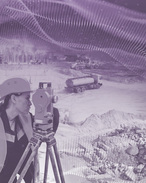On-ground operations have been hampered by the fact that the top of the affected area in the southern Perth Basin – which contains the type of saline aquifer identified by scientists around the world as a potential CO2 storage reservoir – is 70% wetlands.
This exacerbates the effects of the usual wetness that occurs during winter.
Despite this, the DMP’s acting coordinator carbon strategy Martin Burke told ICN sister publication Energy News that his team has been over the moon with results thus far, and the project was on track to have the next well – Harvey-5 – and its analysis complete by 2020.
However, analysis of the work done thus far will determine whether the next phase – Harvey-5 – goes ahead in the first place.
“We’re still very happy with the progress and how we’re tracking with what we’re doing,” he said.
“The amount of data we’ve got out of it has been extremely valuable, not just for the CCS project but for the Perth Basin.”
The aim of the latest drilling program was to evaluate the containment properties of the strata immediately above the potential CO2 reservoir within the Lesueur Sandstone.
New data recently released includes drilling reports and wireline logs from three stratigraphic wells drilled into the three distinct fault blocks around the town of Harvey between December 2014 and June 2015. It also includes photographs of drill core and geological analysis reports.
The drilling program, funded by the Australian government and managed by the DMP, successfully reached target depths of between 1350m and 1800m.
Geological laboratories and South West Hub research partners at the National Geosequestration Laboratory, the University of WA, Curtin University and CSIRO are continuing to work on the core samples and well data.
A total of 24 gigabytes of information about the drilling program is available on the DMP website, in the WA Petroleum and Geothermal Information Management System.
Further analysis and 3D modelling will continue for another year before a decision can be made on drilling a further deep stratigraphic well.
Current modelling is due to be completed by mid-year, with an investment decision by the Commonwealth government on the next phase of the project to then be made in mid–2017.
The Commonwealth’s funding for the South West Hub CCS project under the contract with DMP has thus far been $21.4 million.
The WA government has provided $8.8 million in funding, plus a further $1.3 million of in-kind support; with another $200,000 in funding provided by other parties.
Market changes
Carbon capture can be applied to large-scale emissions processes including coal and gas-fired power generation, natural gas processing and fertiliser production, as well as the manufacture of industrial materials such as cement, iron and steel and pulp and paper.
However, both WA’s energy market and the national policy background have moved of late, with project partners originally expecting – and Labor delivered – a carbon price, which was then abolished by the then-Tony Abbott-led Coalition government.
While applauded by the resources sector, its ironically meant industry had lost one of the incentives to develop CCS technology, which many inside the sector believe will be necessary to make both gas and coal projects environmentally feasible.
The recent phenomenon of solar generation has also impacted things and changed the local energy market, lessening the need for coal-fired power – and one possible utilisation of CCS was to store carbon dioxide from surrounding industry, including coal-fired power plants.
Considering the age of the existing assets, the former Verve Energy (now Synergy) projected that WA would need a new coal-fired baseload power station built around the Collie region, because of its accessibility to coal, around the middle to late 2020s or early 2030s.
In the meantime, those forecasts have failed to materialise, so there has been a significant amount of production in the southwest region that has failed to materialise.
Some 100 megawatts of solar have been coming online annually which is displacing a lot of those old assets.
It now seems unlikely that WA would need a new baseload coal-fired power station in the Collie region before the late 2020s.
Yet the DMP is still plugging away with CCS undaunted, because it’s not only about looking for a coal-fired power station. It’s for any industry with large emissions that could be developed into the future.
Any new development out in Kwinana, south of Perth, or the Kemerton industrial park in the Bunbury region, for example, could potentially utilise the South West Hub project location.
“From the WA government’s perspective, it’s important to test the viability and feasibility of this storage reservoir now so it provides an option for industry to develop into the future,” Burke said.























